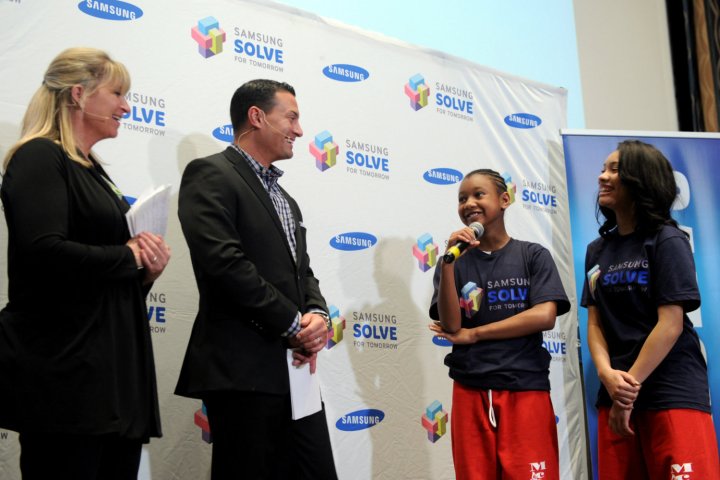
It works like this: Teachers (of any subject) first submit an application online. After applications close at the end of October, five teachers per state (plus the District of Columbia) are chosen to submit a lesson plan showing how they’ll use STEM to help their local community. This year, those 255 state winners get two Galaxy Tabs each.
From December to February, the Samsung reps choose one teacher per state as a winner. Samsung will gift them a camcorder and laptop to make a video showcasing their invention or solution to their community challenge. Their award will be at least $20,000 in technology (judged by the retail price) for their school.
Fifteen national finalists will be pulled from the 51 state winners by March. Their videos will be shown online, where the public will get a chance to vote. All national finalists win a minimum of $40,000 in tech.
The fifteen national finalists will be narrowed down to five National Winners in April. One champion is chosen via online voting, another by Samsung employees, and three by a panel of judges during an in-person event featuring presentations by all fifteen finalists. All five winners get a grant of $120,000.

Last years’ Community Choice Grand Prize winner was “Vertical Veggies” from the North West Pennsylvania Collegiate Academy. According to their team video, many students in the Eerie school district live below the poverty line and the free lunch they get at school may be the best meal they eat all day. Because of that, the NWPA team constructed several different vertical garden designs focused on shrinking the footprint to something more manageable for urban environments.
The deadline for submissions is October 30. BrainPOP, a website for fun, interactive STEM education, is providing free STEM content that participants can use on their projects.


